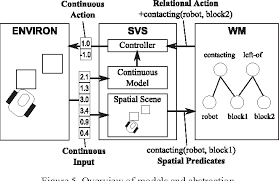
Apache MXNet is a popular deep learning platform that allows for both imperative and symbolic programming. This can be useful in both research and production environments. It also offers a powerful C++ library with machine learning tools, such as clustering, transfer learning, and reinforcement-learning. Its intuitive API makes this a popular choice for many companies. If you are looking to build an AI system, Apache MXNet may be the right choice.
TensorFlow
TensorFlow is an excellent choice for deep-learning projects. TensorFlow's API is simple and easy to use by developers. It also offers built-in libraries as well as previous APIs. It can also be used with Keras and other deep learning frameworks. TensorFlow does have some drawbacks. Read on to learn how it differs from other deep learning frameworks.

PyTorch
Python users will appreciate the simplicity and extensibility of PyTorch. The framework can be used to create C/C++ code using a Python extension API. It is also compiled for GPU and CPU operations. It's popularity and ease of extensibility makes it a favourite among researchers. Although PyTorch doesn't have as many options as TensorFlow to build deep learning models of your data, PyTorch has the potential to do so. You can create new models or run existing models using the Python extension API.
Chainer
Chainer is a Python-based deep learning framework that gives developers the flexibility to create models that perform a variety of tasks. This language-neutral framework is compatible with many languages and can be used for many applications such as speech recognition, image processing and forecasting. Chainer has been noted as being the most flexible deep learning framework within the Python ecosystem. Additionally, it is the first deeplearning framework to allow the "define by-run" method. This approach allows you to create connections between mathematical functions and then perform analysis.
DL4j
DL4j is an open source deep learning framework. It supports Python API, as well as other frameworks. It supports CUDA integration and GPU optimizing. Another advantage is its JVM compatibility. It supports distributed programing and is supported worldwide by several companies and vendors. This framework caters to both researchers and professionals. If deep learning is not something you are familiar with, MATLAB may be the right tool for you.

MXNet
MXNet, an open-source framework for deep neural network development, is available. It offers several advantages over other deeplearning frameworks such as its high performance, scalability, and flexibility. MXNet can be used with many programming languages. It also allows multi-GPU learning. Its flexible programming model allows for both symbolic as well as imperative programming. Additionally, it can scale to multiple machines/GPUs. MXNet isn't as well-known as TensorFlow.
FAQ
How does AI work
You need to be familiar with basic computing principles in order to understand the workings of AI.
Computers store information on memory. Computers process data based on code-written programs. The code tells computers what to do next.
An algorithm is a set or instructions that tells the computer how to accomplish a task. These algorithms are usually written in code.
An algorithm can also be referred to as a recipe. A recipe might contain ingredients and steps. Each step represents a different instruction. For example, one instruction might read "add water into the pot" while another may read "heat pot until boiling."
What will the government do about AI regulation?
Although AI is already being regulated by governments, there are still many things that they can do to improve their regulation. They should ensure that citizens have control over the use of their data. A company shouldn't misuse this power to use AI for unethical reasons.
They should also make sure we aren't creating an unfair playing ground between different types businesses. If you are a small business owner and want to use AI to run your business, you should be allowed to do so without being restricted by big companies.
What's the status of the AI Industry?
The AI industry continues to grow at an unimaginable rate. Over 50 billion devices will be connected to the internet by 2020, according to estimates. This will mean that we will all have access to AI technology on our phones, tablets, and laptops.
This means that businesses must adapt to the changing market in order stay competitive. They risk losing customers to businesses that adapt.
The question for you is, what kind of business model would you use to take advantage of these opportunities? Could you set up a platform for people to upload their data, and share it with other users. You might also offer services such as voice recognition or image recognition.
Whatever you choose to do, be sure to think about how you can position yourself against your competition. You won't always win, but if you play your cards right and keep innovating, you may win big time!
What are some examples AI-related applications?
AI is being used in many different areas, such as finance, healthcare management, manufacturing and transportation. Here are just a few examples:
-
Finance - AI can already detect fraud in banks. AI can scan millions of transactions every day and flag suspicious activity.
-
Healthcare - AI is used to diagnose diseases, spot cancerous cells, and recommend treatments.
-
Manufacturing - AI in factories is used to increase efficiency, and decrease costs.
-
Transportation - Self-driving cars have been tested successfully in California. They are now being trialed across the world.
-
Utilities can use AI to monitor electricity usage patterns.
-
Education - AI can be used to teach. Students can, for example, interact with robots using their smartphones.
-
Government - AI is being used within governments to help track terrorists, criminals, and missing people.
-
Law Enforcement - AI is being used as part of police investigations. Search databases that contain thousands of hours worth of CCTV footage can be searched by detectives.
-
Defense - AI systems can be used offensively as well defensively. Offensively, AI systems can be used to hack into enemy computers. Artificial intelligence can also be used defensively to protect military bases from cyberattacks.
AI is good or bad?
Both positive and negative aspects of AI can be seen. The positive side is that AI makes it possible to complete tasks faster than ever. There is no need to spend hours creating programs to do things like spreadsheets and word processing. Instead, our computers can do these tasks for us.
On the other side, many fear that AI could eventually replace humans. Many believe that robots could eventually be smarter than their creators. This means that they may start taking over jobs.
What is the role of AI?
An artificial neural network consists of many simple processors named neurons. Each neuron receives inputs and then processes them using mathematical operations.
Neurons are organized in layers. Each layer has a unique function. The first layer receives raw data, such as sounds and images. It then sends these data to the next layers, which process them further. The final layer then produces an output.
Each neuron has a weighting value associated with it. When new input arrives, this value is multiplied by the input and added to the weighted sum of all previous values. If the result is greater than zero, then the neuron fires. It sends a signal down the line telling the next neuron what to do.
This process repeats until the end of the network, where the final results are produced.
Which industries use AI most frequently?
The automotive industry is one of the earliest adopters AI. BMW AG uses AI as a diagnostic tool for car problems; Ford Motor Company uses AI when developing self-driving cars; General Motors uses AI with its autonomous vehicle fleet.
Other AI industries include insurance, banking, healthcare, retail and telecommunications.
Statistics
- Additionally, keeping in mind the current crisis, the AI is designed in a manner where it reduces the carbon footprint by 20-40%. (analyticsinsight.net)
- A 2021 Pew Research survey revealed that 37 percent of respondents who are more concerned than excited about AI had concerns including job loss, privacy, and AI's potential to “surpass human skills.” (builtin.com)
- More than 70 percent of users claim they book trips on their phones, review travel tips, and research local landmarks and restaurants. (builtin.com)
- According to the company's website, more than 800 financial firms use AlphaSense, including some Fortune 500 corporations. (builtin.com)
- That's as many of us that have been in that AI space would say, it's about 70 or 80 percent of the work. (finra.org)
External Links
How To
How to create an AI program
To build a simple AI program, you'll need to know how to code. There are many programming languages, but Python is our favorite. It's simple to learn and has lots of free resources online, such as YouTube videos and courses.
Here is a quick tutorial about how to create a basic project called "Hello World".
First, open a new document. For Windows, press Ctrl+N; for Macs, Command+N.
Then type hello world into the box. Press Enter to save the file.
For the program to run, press F5
The program should display Hello World!
This is only the beginning. If you want to make a more advanced program, check out these tutorials.